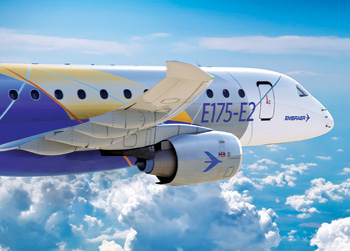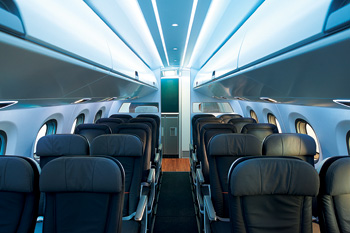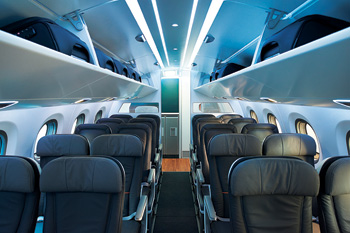INDIAN ARMED FORCES CHIEFS ON OUR RELENTLESS AND FOCUSED PUBLISHING EFFORTS

The insightful articles, inspiring narrations and analytical perspectives presented by the Editorial Team, establish an alluring connect with the reader. My compliments and best wishes to SP Guide Publications.

"Over the past 60 years, the growth of SP Guide Publications has mirrored the rising stature of Indian Navy. Its well-researched and informative magazines on Defence and Aerospace sector have served to shape an educated opinion of our military personnel, policy makers and the public alike. I wish SP's Publication team continued success, fair winds and following seas in all future endeavour!"

Since, its inception in 1964, SP Guide Publications has consistently demonstrated commitment to high-quality journalism in the aerospace and defence sectors, earning a well-deserved reputation as Asia's largest media house in this domain. I wish SP Guide Publications continued success in its pursuit of excellence.
New Metrics of Success
The E-Jets family from Embraer has clearly defined a segment and has changed the way the world flies, blurring the line between mainline and regional markets



It is a widely known fact that on account of its inherent challenges, running an airline is indeed a difficult business. Planning for the future has always been a daunting challenge for airlines. Not only do airlines need to estimate their capacity requirements far in advance, they must also ensure that their investment in new equipment provides acceptable returns on the investment in assets. Speaking at the Berkshire Hathway Annual Meeting in 2013, the legendary American business magnate, investor and philanthropist Warren Edward Buffet summed it up in the words: “Investors have poured their money into airlines for hundred years with terrible results.”
But things are set to change for the airline industry as there is a growing need for more network connectivity and frequency of flights. The high growth rate of traffic in Asia, larger disposable incomes among a rising middle class in Africa and Latin America, continued strength in the US and economic recovery in Europe, will help propel the global airline industry to new heights.
Getting the Size Right
Over the years the airline industry has been evolving with operating costs progressively reducing primarily with the help of better technology such as more fuel-efficient power plants, higher thrust-to-weight ratios, lighter airframes made of composites and improved aerodynamics resulting in lower drag. However, competition amongst airlines for market share is also intensifying. In this hostile environment, profitability of an airline ultimately hinges on the number of seats sold out for each flight. Thus fewer empty seats translate to higher levels of profitability. However, the real challenge for airlines is to have aircraft of the right size and capacity to match demand. Embraer has been in the forefront since over a decade ago in providing a solution to this dilemma that airlines face. The company first came up with the 70- to 110-seat E-Jets that enabled airlines to manage revenues with greater precision and enhance profitability. The success of this innovative approach was clearly evident in the fact that over 1,000 E-Jets were delivered to airlines across the world. The E-Jets family has logged over 15 million flight hours which translates into maturity in operation and higher reliability for airline business. More recently, Embraer has moved on to redefine capacity to match the growing demand and now offers the next-generation E-Jets E2 with a capacity of 70 to 130 seats.
With a view to achieve lower unit costs and higher levels of profitability, some airlines went in for increase in capacity by operating larger aircraft. However, in order to remain competitive, airlines were compelled to keep air fares at low levels. The problem such carriers faced was that with larger aircraft, the number of seats that remained unsold or were sold in the last minute at much lower cost. This resulted in decrease in revenues and significantly depressed profit levels. Even in a highly competitive environment, aircraft with fewer seats generally command higher average yield as compared to large size aircraft as in the right size aircraft, fewer seats would be sold to low yield passengers that turn up in the last minute. While airlines may be able to improve load factors; but what is more critical is to improve load factors along with profitability and that too without lowering fares.
As per the Brazilian aerospace major Embraer, there is only one way to increase unit revenue as also the load factor simultaneously. This can be achieved by operating an airliner with the appropriate capacity as also through proper capacity management. A right size aircraft can catalyze revenue management and capacity allocation system by better accommodating demand variations and maximising yield. Airlines thus can increase unit profit and ‘return on aircraft assets’ (ROAA), a virtual cycle that results in sustainable profitability. As per Embraer, ROAA is a meaningful metric for assessing asset performance. This therefore is the fundamental new metric of success and signifies transition on the part of airlines from pursuit of market share to focus on higher levels of return on investment. Extracting the maximum output from aircraft assets is fundamental to sustaining an airline business and assures its bright future.
Innovative Products from Embraer
Both the current models of E-Jets as well as the next-generation E-Jets E2 fit seamlessly with the new metrics of success. Apart from the essential attributes of all the models of E-Jets such as advanced avionics, performance, economy of operations and cabins designed for supreme passenger comfort, investments made over the years by the original equipment manufacturer (OEM) Embraer has resulted in savings in fuel costs by over six per cent and longer service intervals thus reducing maintenance costs over its life cycle. As for the second-generation E2, per seat, it offers savings up to 25 per cent in maintenance costs and reduction in fuel burn by 24 per cent. This sets a new standard in life-cycle cost. A noise footprint reduction of over 60 per cent helps in building a sustainable future.
With over 1,500 orders, the E-Jets family has clearly defined a segment and has changed the way the world flies, blurring the line between mainline and regional markets. The secondgeneration of E-Jets – the E2—signals even higher levels of achievement as compared to the first-generation E-Jets. Like the original family, the E2 has been designed to be the best business oriented solution for the segment apart from an exercise in technology upgrade. Supported by a broad customer base across the world, the E2 programme represents a low risk investment not only for the airlines but also for the financial community, led by the investors. The E-Jets E2 family of airliners has the highest potential for making profits and record the best asset performance in the 70- to 130-seat segment.
Customer Support
Embraer’s primary objective has been to ensure that customers derive the maximum returns on their investment. The company leaves no stone unturned to see that its products delivers the highest levels of reliability, efficiency and profitability from day one. E2 brings the E-Jet family to a new level of efficiency with double digit reduction in fuel burn and maintenance costs in all the three models, further contributing to unit profit differentiation in comparison with other airliners.
Product quality is only one part of the larger business canvas. Embraer believes in delivering complete solutions to minimise life-cycle cost so that airlines can focus on their own business models. Embraer provides a global services and support network that includes 37 service centres as well as a centralised customer care centre that provides a prompt response mechanism for a full range of needs including field and technical support, material and spare parts, consultation for flight and maintenance operations, upgrade and modification of aircraft, comprehensive crew and personnel training, technical publications and eSolutions.
Focus on Return on Investment
For the last over four decades, Embraer has been engaged in designing and manufacturing some of the world’s finest aircraft. Embraer’s products are born out of the company’s assessment of the needs of the industry and in depth study and understanding of the market. Just over 10 years ago, the company made a bold move to introduce a whole new category of airliners based on the opportunities they perceived in airlines operating the right sized aircraft that were easier to fill than large size airliners. The relatively small airliners in the E-Jets category also delivered passenger experience that was equal if not better than that delivered by large-size airliners.
Embraer has firmly established the important business principle of right sizing airliners to maximise profitability and rake in handsome returns. It has become clear over a period of time that merely putting an aircraft into commercial service does not automatically assure profits for the airline. The economic viability of a commercial aircraft once in service is contingent on the ability of the airline to sell the maximum number of seats in every flight at fares that are high enough to generate acceptable returns on investment.
The airline business is highly capital intensive which makes it all the more important to have a business model that is sustainable since short-term strategies may carry undue risk. There is now an emerging trend among airlines to focus on generating return on shareholder-invested capital as their main goal.





